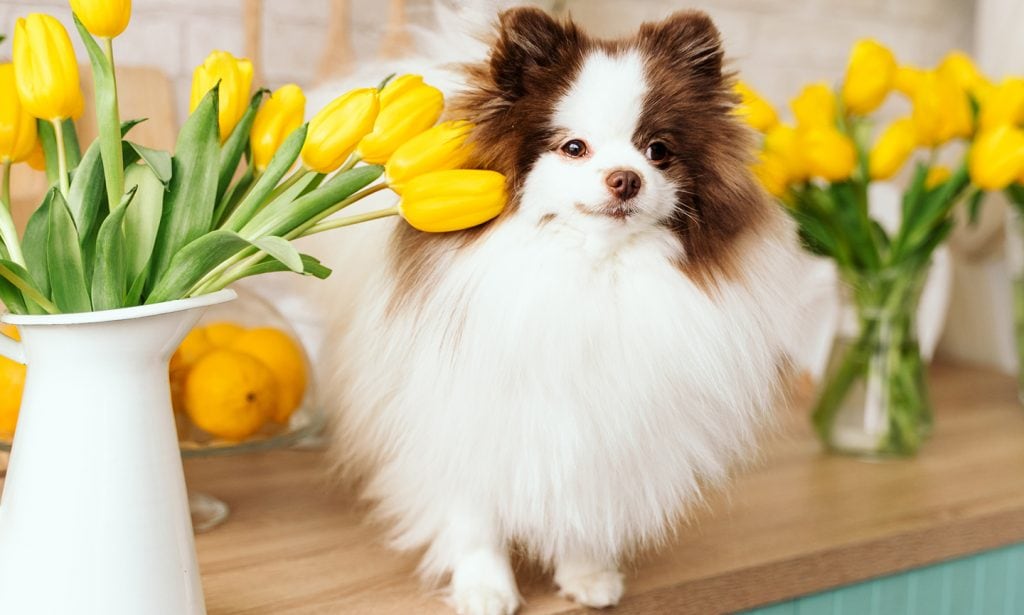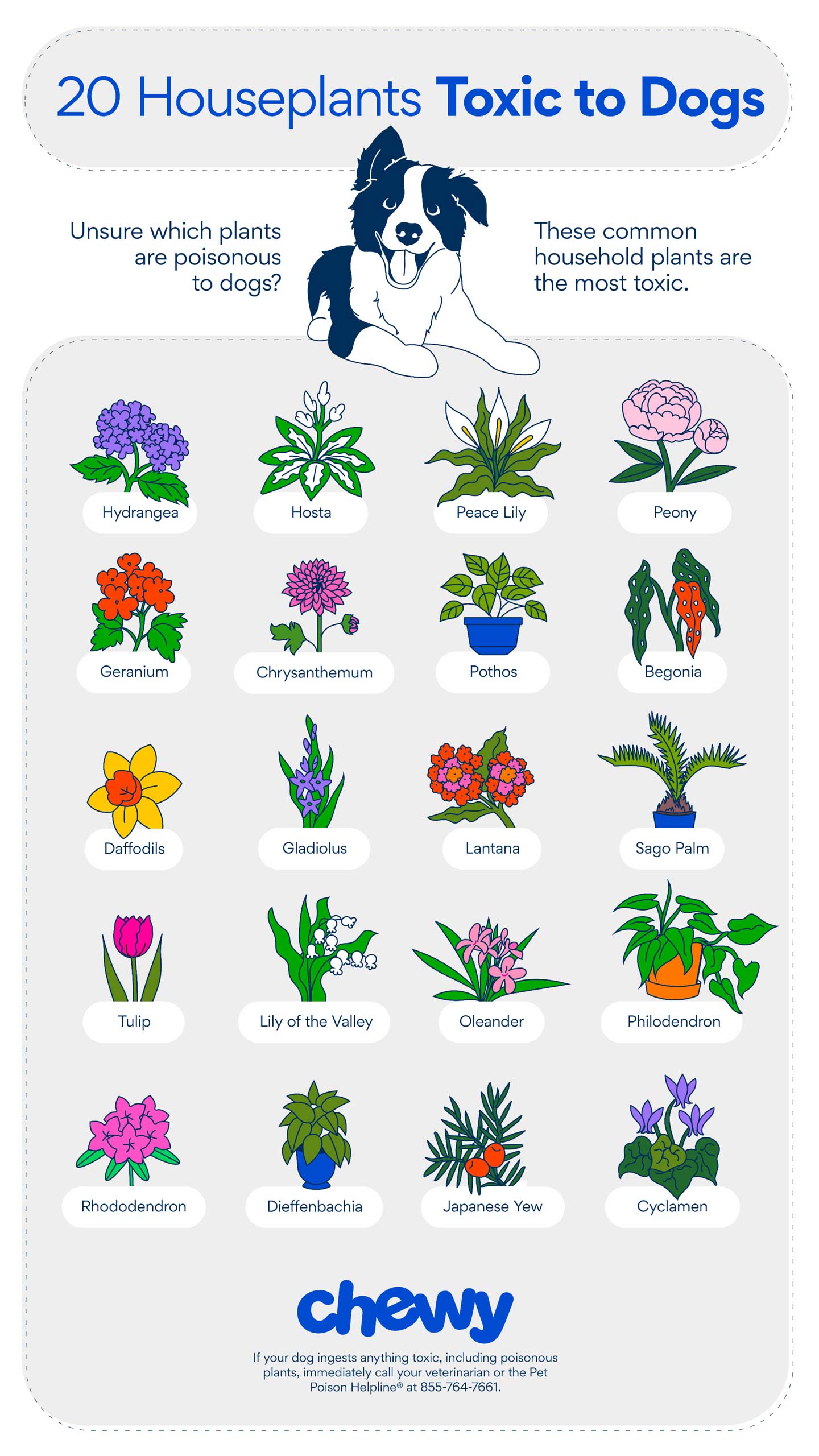Dogs are notorious for getting their snouts into things they shouldn’t. Besides their dog food, they’ll happily snuffle and scarf up anything they come across, from litter on the sidewalk to the newly planted flower bulbs in your garden. And while some of the stuff your pooch comes across is just gross, other items can be downright dangerous. In fact, there are tons of poisonous plants for dogs that can harm your pet.
The ASPCA Animal Poison Control Center reported that in 2022, over 8 percent of all calls were related to pets ingesting plants toxic to them, making it sixth on their list of the top 10 pet toxins.
We spoke with a director at the ASPCA Animal Poison Control Center and three other veterinarians to identify the most common poisonous plants for dogs.
In This Guide
20 Plants That Are Toxic to Dogs
1 Sago Palm
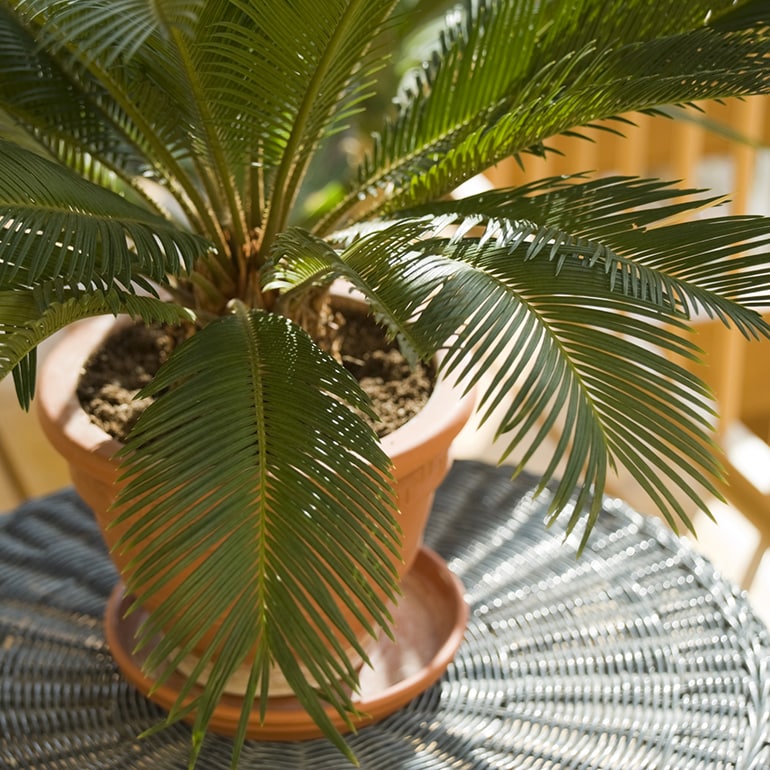
With its stiff fronds, the sago palm looks like a tiny palm tree and can live indoors or outdoors. It's toxic to all pets, says Laura Stern, DVM, DABVT, director of client programs for the ASPCA Animal Poison Control Center.
Symptoms include:
- Vomiting
- Diarrhea
- Seizures
- Liver failure
- Potentially death
And while the leaves and bark will harm your pup, “the seeds or ‘nuts’ contain the largest amount of toxins,” Dr. Stern says.
2 Tulip
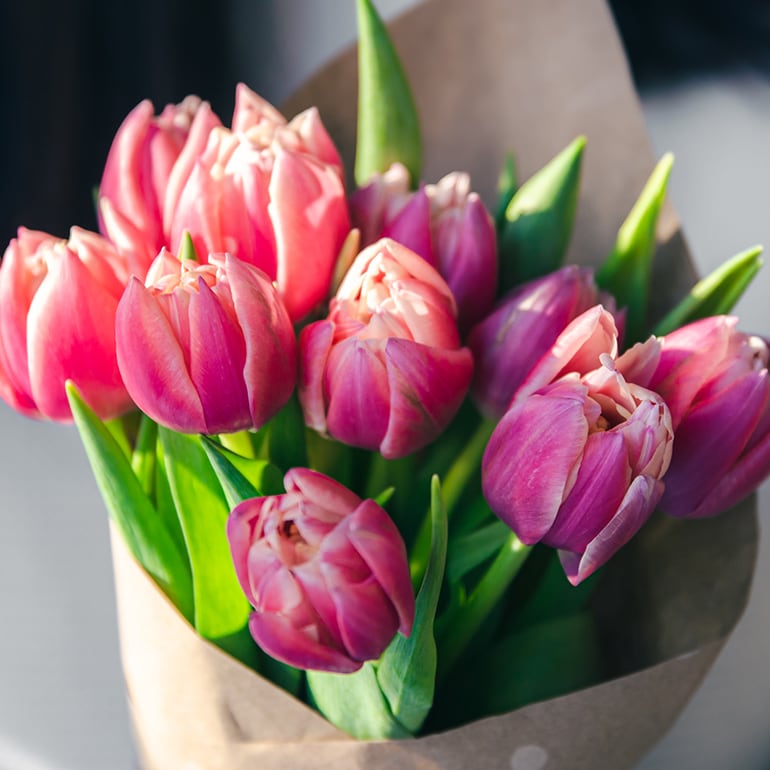
Tulips are spring-blooming flowers that many people love to have in their home—indoors and outdoors. Dog parents should skip these brightly colored flowers, though.
If your dog chews on the lance-shaped leaves, they could get an upset stomach. However, the real danger lies when your dog digs up and eats the newly planted bulbs, which have the most toxins.
According to Dr. Stern, tulip bulbs can cause:
- Stomach upset
- Depression
- Loss of appetite
With large ingestions, dogs may also experience:
- Increased heart rate
- Difficulty breathing
3 Lily of the Valley
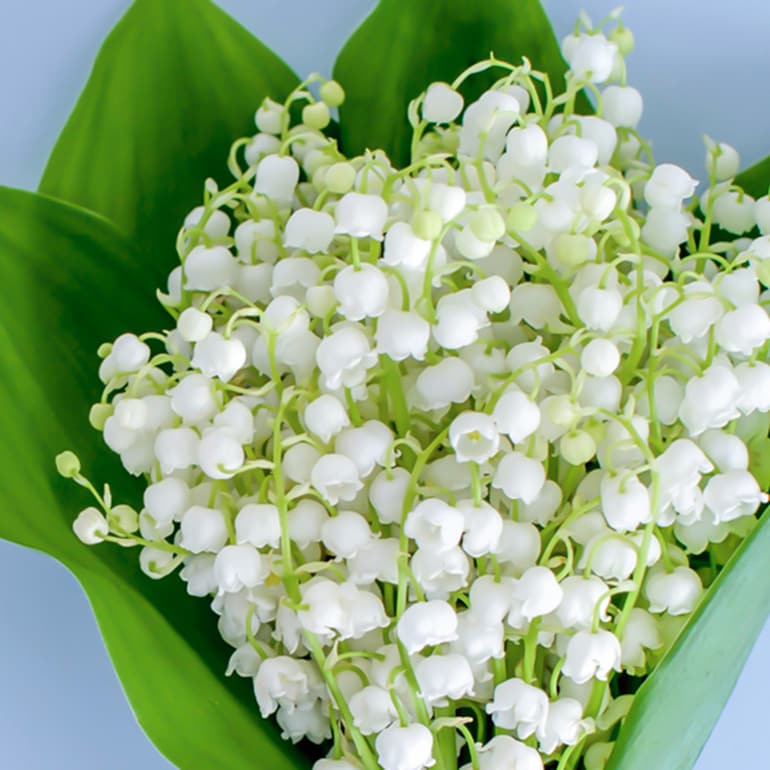
There are a ton of reasons why lilies of the valley are such popular garden plants: They are sweet-smelling; they have adorable, little white bell-shaped flowers; and they can thrive in shady places. But though they may be pretty, lilies of the valley are poisonous to dogs.
“Even a small exposure to any part of the plant can cause heart problems for dogs—changes in heart rate and rhythm,” Dr. Stern warns.
Eating a few leaves or bulbs can also lead to the following symptoms:
- Diarrhea
- Vomiting
- Low blood pressure
- Disorientation
- Seizures
- Coma
- Arrhythmia (irregular heartbeat)
4 Oleander

Oleander is a common landscaping plant, especially on the West Coast. This bushy shrub can grow as high as 12 feet, and it’s prized for its cluster of flowers in shades of yellow, white, pink, and red.
Every inch of this plant is poisonous to dogs—from the flower petals to the pointy, long leaves.
“Like lily of the valley, oleander also contains cardiac glycosides,” Dr. Stern explains, adding that symptoms can include:
- Changes in heart rate and heart rhythm
- Diarrhea
- Abdominal pain
- Drooling and excess salivation
- Possible death
5 Philodendron
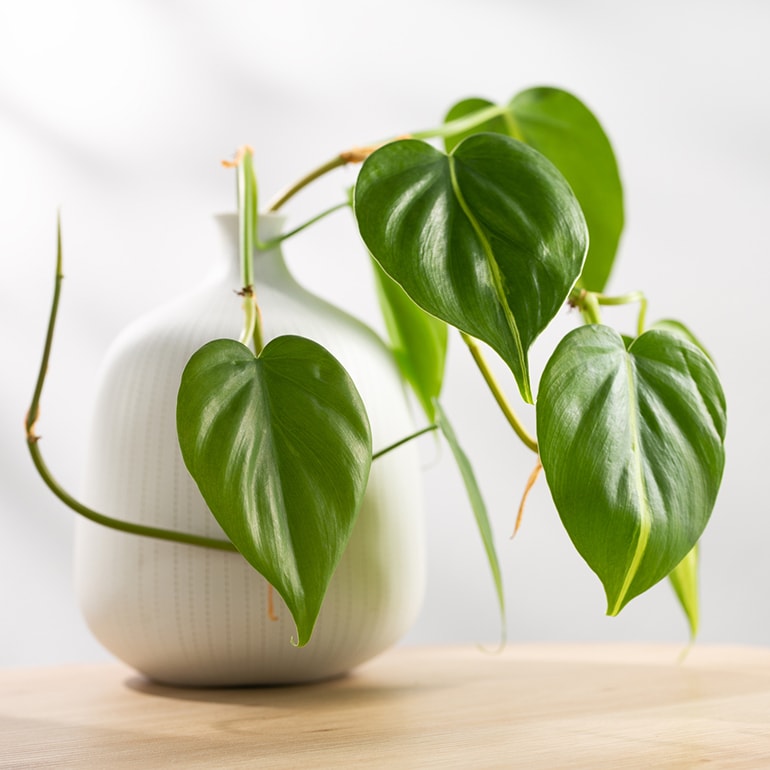
Philodendrons have heart-shaped leaves and long vines, and are a very popular houseplant. Beware, though: These plants contain insoluble calcium oxalate crystals, which can irritate your dog’s mouth and lips.
If they’ve swallowed some leaves, other symptoms include:
- Pawing the mouth
- Drooling
- Retching
6 Rhododendron (Azalea)
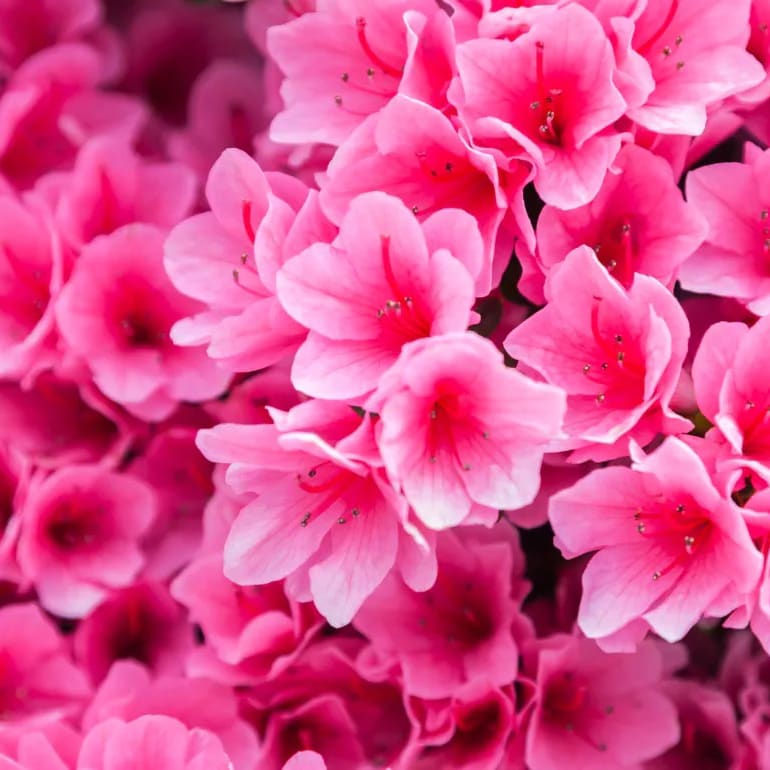
You see these flowering shrubs in many back and front yards across the country.
All parts of these flowering beauties contain grayanotoxin, and the reaction your pup gets depends on how much they’ve eaten.
“The most common sign with the ingestion of azaleas is stomach upset,” Dr. Stern says.
It’s very rare for dogs to eat a lot of azaleas, but when they do, they can get:
- Very weak
- Tremors
- Low blood pressure
- Irregular heart rate and rhythm
7 Dieffenbachia (Dumb cane)
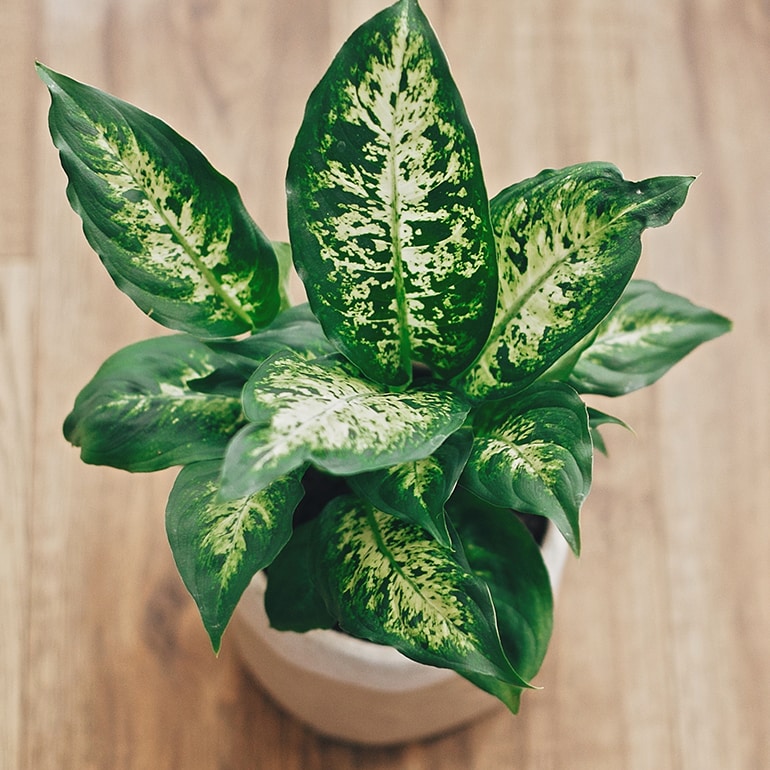
These mostly indoor plants have lush green leaves with white spots or stripes. If your dog nibbles on the leaves, they’re likely to feel as if their mouth, tongue, and lips are burning, thanks to the calcium oxalate crystals (the same ones found in philodendrons).
According to Ann Hohenhaus, DVM, DACVIM, a veterinarian at Animal Medical Center in New York City, other symptoms include:
- Drooling
- Vomiting
- Difficulty breathing
8 Japanese Yew (Buddhist pine, Southern yew)

These plants look like small evergreen trees or shrubs with needle-like leaves and small red berries. You can find them throughout the United States.
While the berries aren’t toxic to dogs, the leaves, seeds, and bark are.
According to Dr. Stern, they can cause:
- Vomiting
- Lethargy
- Wobbly gait
- Heart and blood pressure changes, which can be life threatening
Other early warning signs your dog may display include seizures and muscle tremors.
9 Cyclamen
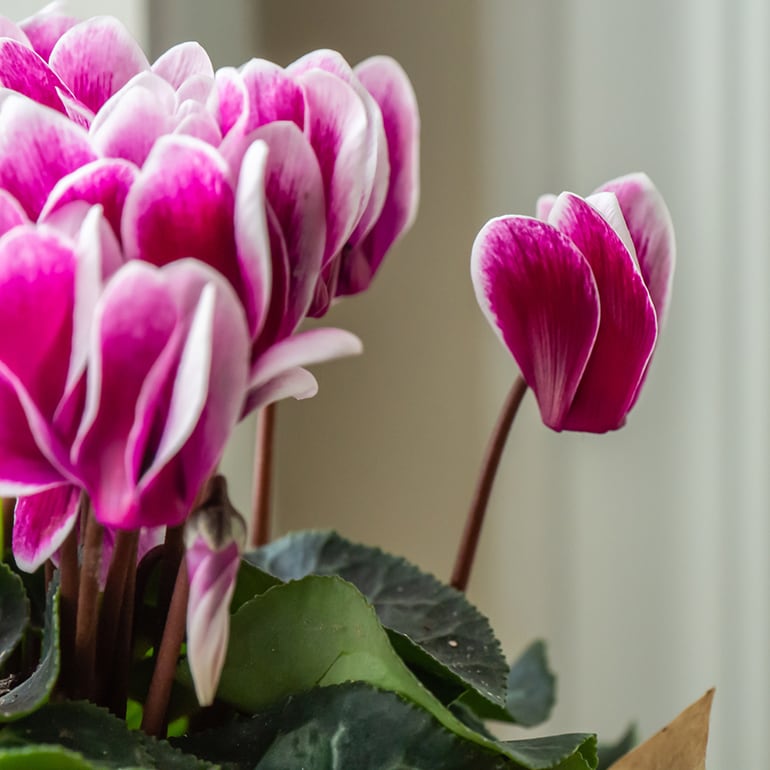
With intensely colored blooms (think every shade of pink) that last a long time, cyclamen is a popular houseplant, especially in the winter.
If your pup eats any part of the plant, they’re likely to:
- Drool
- Vomit
- Have diarrhea
If they dig up the plant and gobble up the roots (or tubers as they’re known), it can affect their heart rate and rhythms, and may even cause death, Dr. Hohenhaus says.
10 Lantana
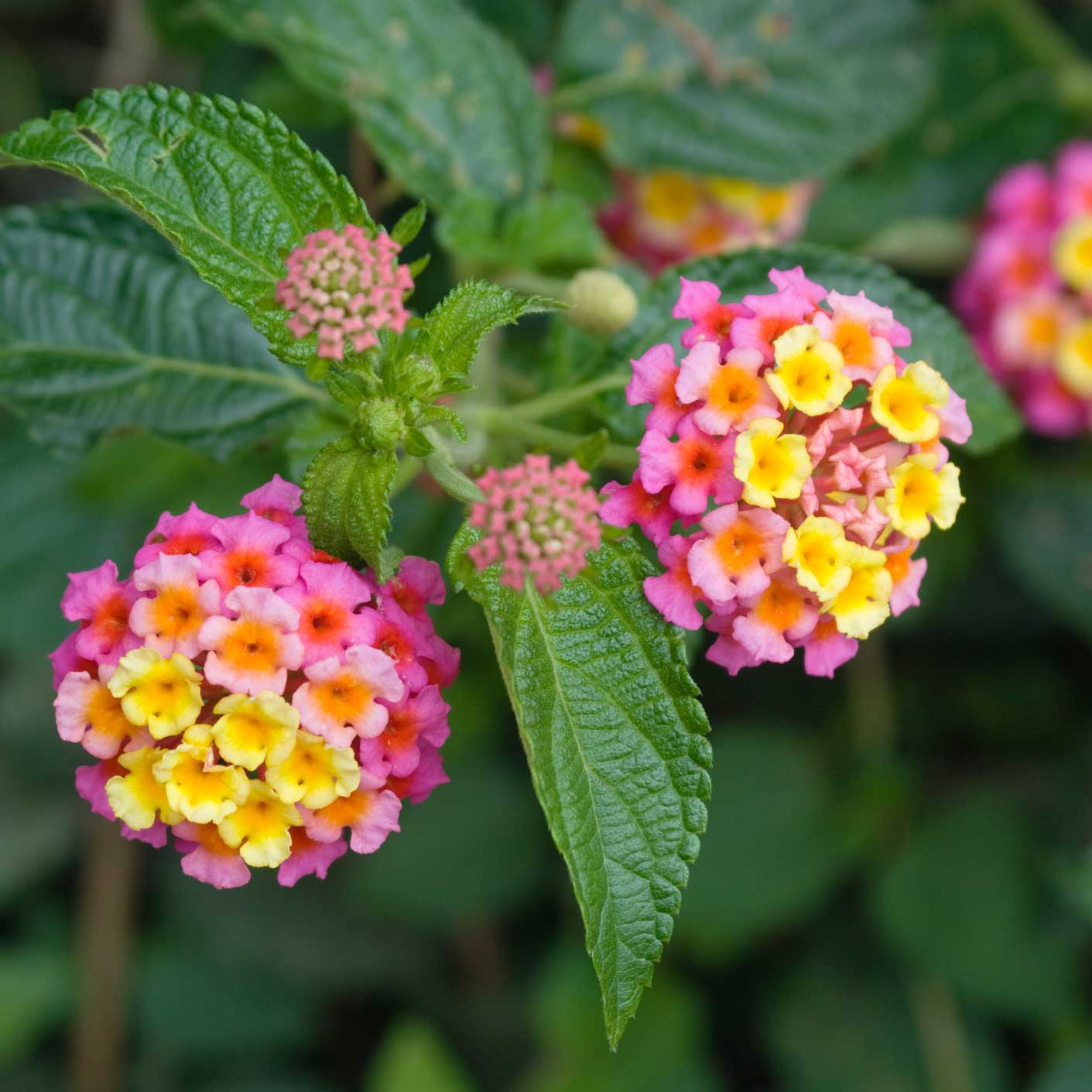
A lantana plant is a shrub that brims with colorful, cluster-like flowers, and it’s toxic to dogs and cats. Your pet’s reaction may depend, in part, on the ripeness of the berries they’ve eaten.
If eaten by your dog, the unripe berries of a lantana can have severe effects. “In very large ingestions, you can see coma and death,” Dr. Schmid warns. Ripe berries, on the other hand, typically only cause vomiting and diarrhea.
Symptoms include:
- Vomiting
- Diarrhea
- Dilated pupils
- Difficulty walking
- Lethargy
- Coma
- Death
11 Hydrangea
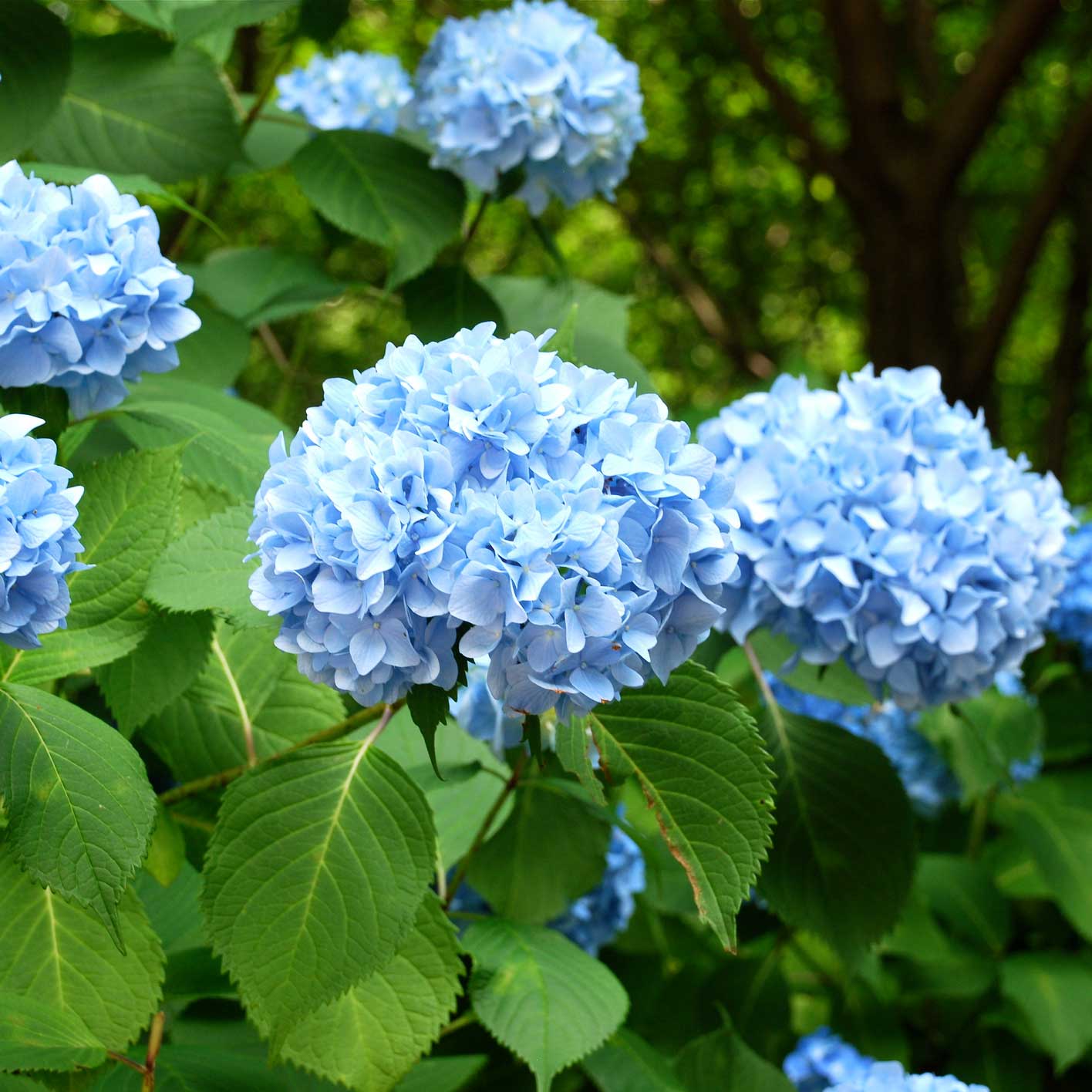
In varying shades of blue, pink, and purple, hydrangeas, with their large flower clusters, are certainly pretty from afar. But this plant is toxic to both dogs and cats.
Even though all parts of the plant are toxic, Renee Schmid, DVM, DABT, DABVT, director of veterinary medicine and senior veterinary toxicologist at the Pet Poison Helpline, says that only GI upset will likely result.
Symptoms include:
- Vomiting
- Diarrhea
- Decreased appetite
12 Hosta
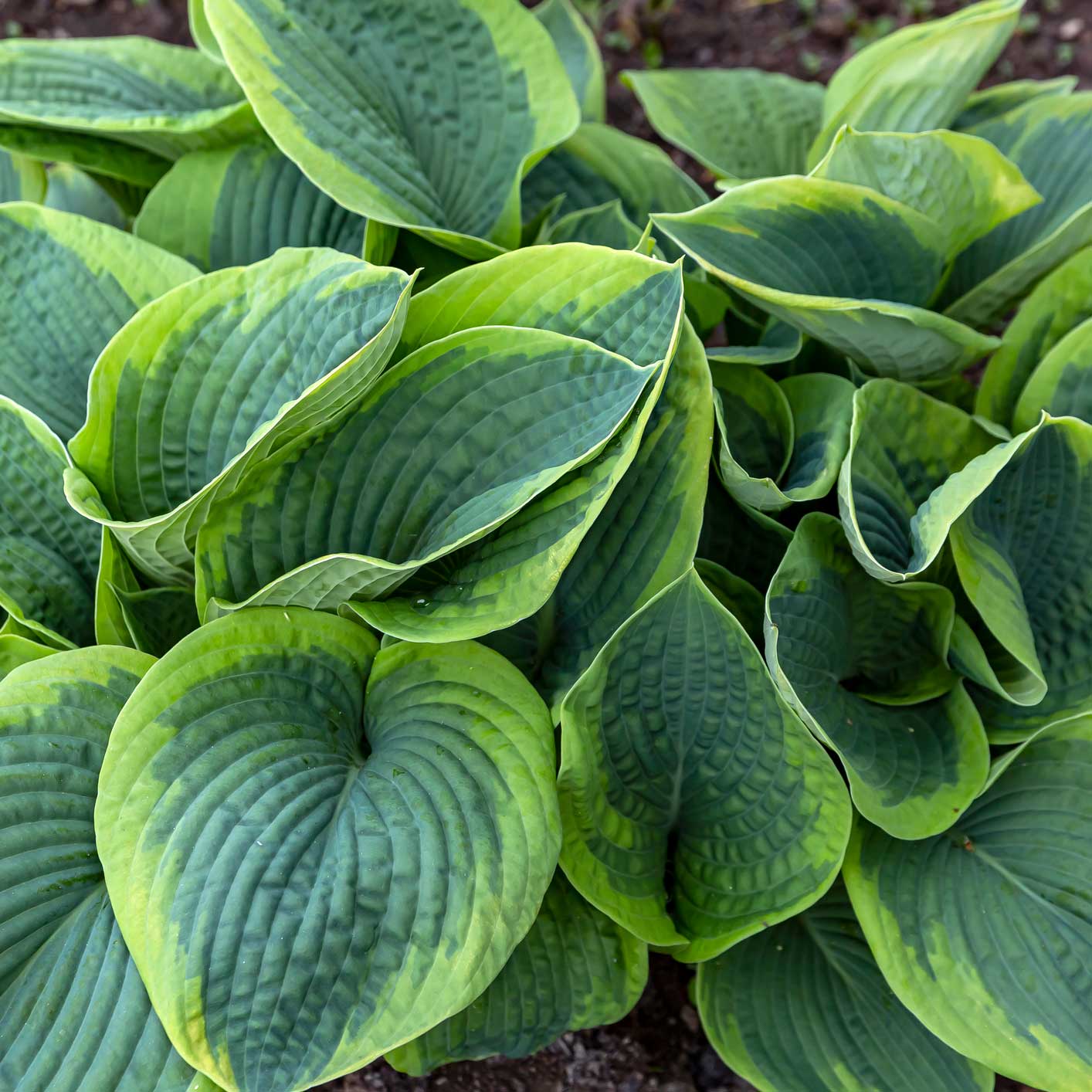
As perennial plants that live in shaded areas, hosta plants, with their lush, vibrant leaves, are toxic to dogs and cats alike.
Jennifer Kendall, DVM, DABT, DABVT, senior toxicologist at the ASPCA Animal Poison Control Center, explains that all parts of the plant contain something called saponins, which can irritate the intestinal tract.
Symptoms include:
- Vomiting
- Diarrhea
- Depression
- Anorexia (not eating)
13 Peace Lily
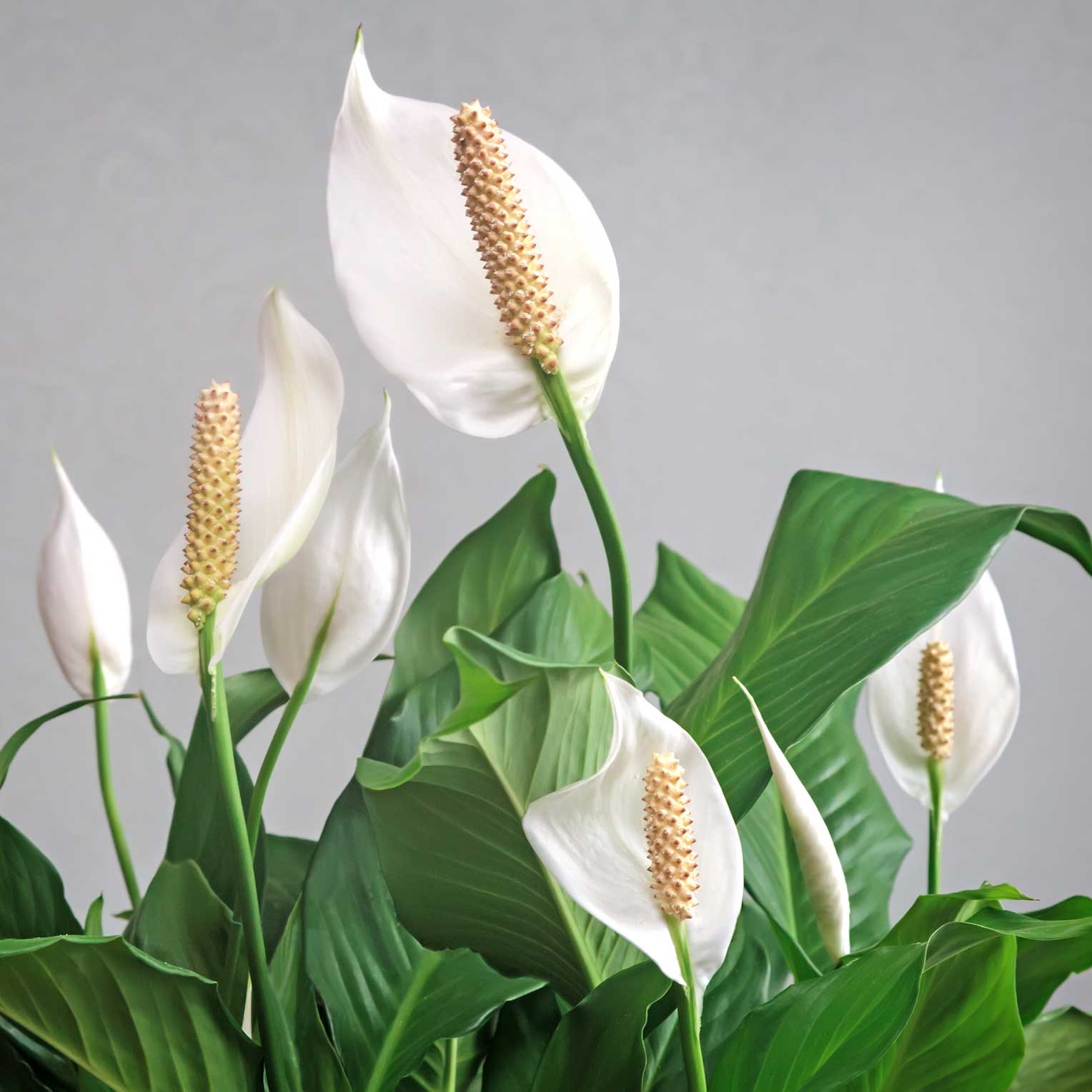
Known for its white blooms and natural beauty, a peace lily isn’t quite so peaceful for dogs and cats. These plants are toxic. They contain insoluble calcium oxalate crystals, which can cause severe pain to the mouth, tongue, esophagus, and stomach.
“These irritating crystals are found in all parts of the plant,” Dr. Kendall says, and adds that symptoms appear immediately when chewed.
Symptoms include:
- Drooling
- Pawing at the face
- Vomiting
- Retching
- Redness and swelling of the lips, mouth, and tongue
- Diarrhea
- While extremely rare, if severe enough, swelling can affect the ability to breathe
14 Peony
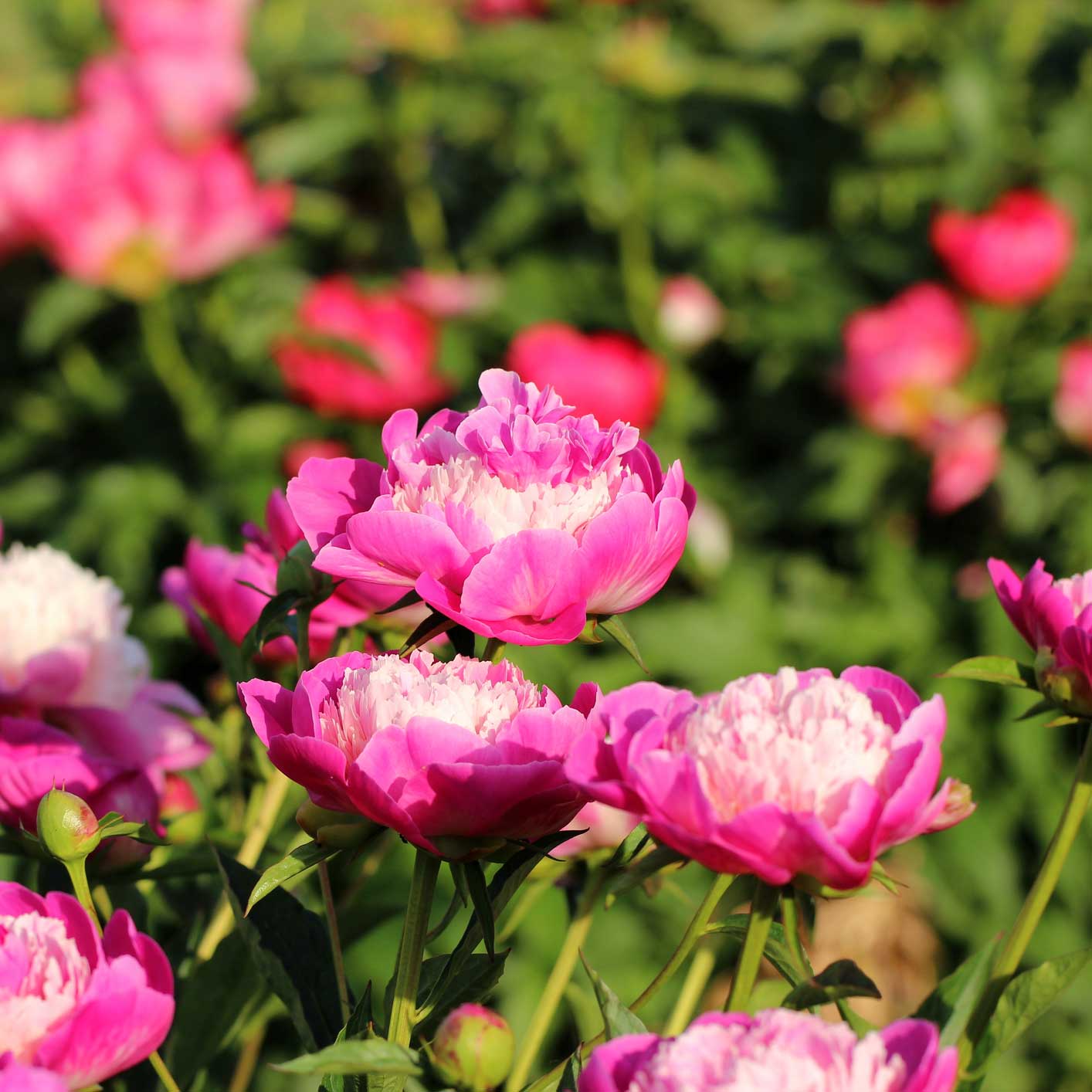
Peonies are gorgeous summertime additions to outdoor landscaping, with their vibrant, fragrant blooms, but they are toxic to both dogs and cats.
Although ingestion of any part of the plant can cause symptoms, “it is more likely if the bark is ingested,” Dr. Kendall says.
“In most cases, just GI upset develops,” Dr. Schmid says. “If larger amounts are ingested, lethargy and depression may develop.”
Symptoms include:
- Vomiting
- Diarrhea
- Lethargy
- Depression
15 Geranium
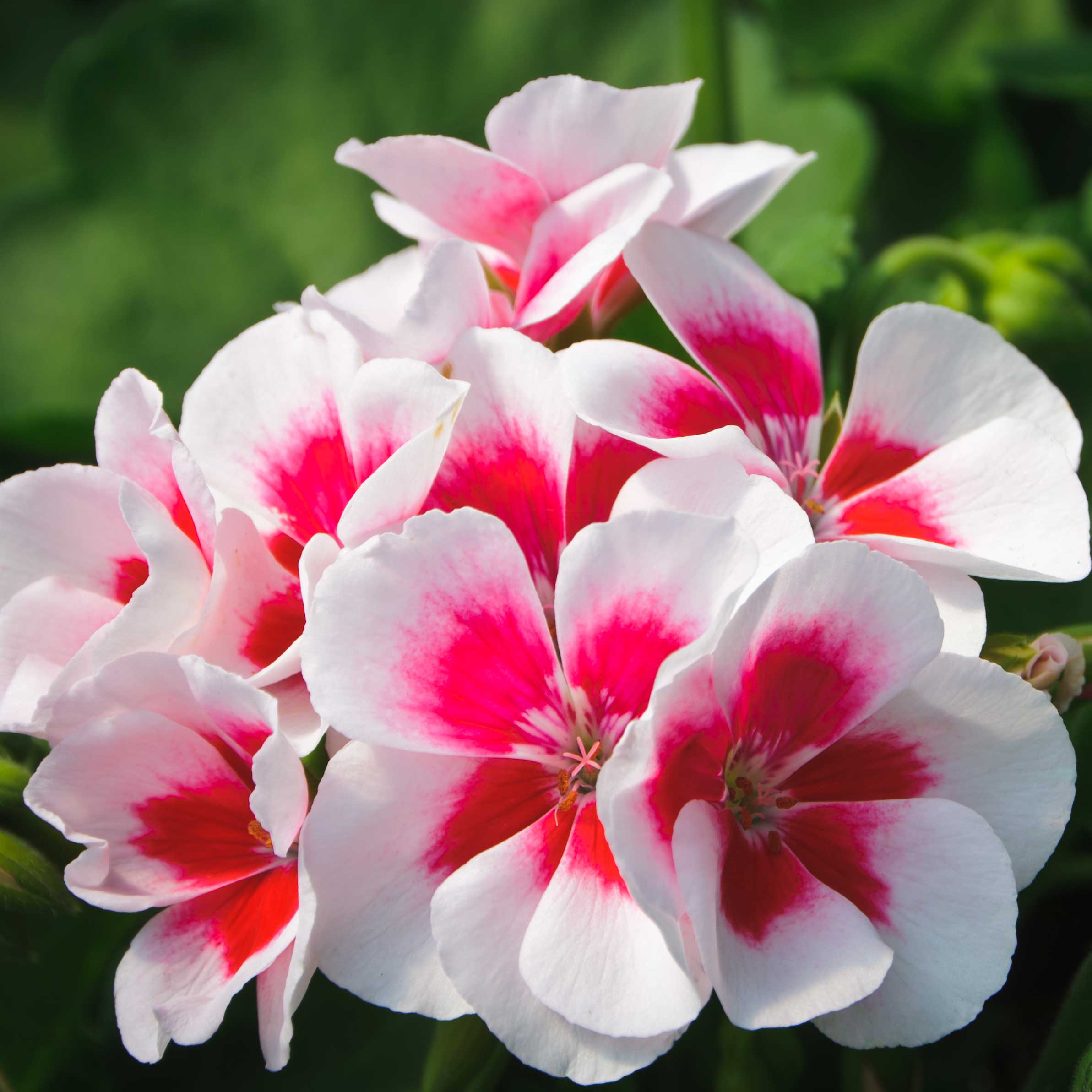
Popular in outdoor planters and hanging baskets, geraniums come in lots of colors—but no matter the hue, they are toxic to dogs and cats. Although all parts of the plant are toxic, Dr. Schmid points out that symptoms usually resolve on their own without needing medical treatment.
Symptoms include:
- Vomiting
- Diarrhea
- Depression
- Anorexia
- Skin irritation
16 Chrysanthemum (Mums)
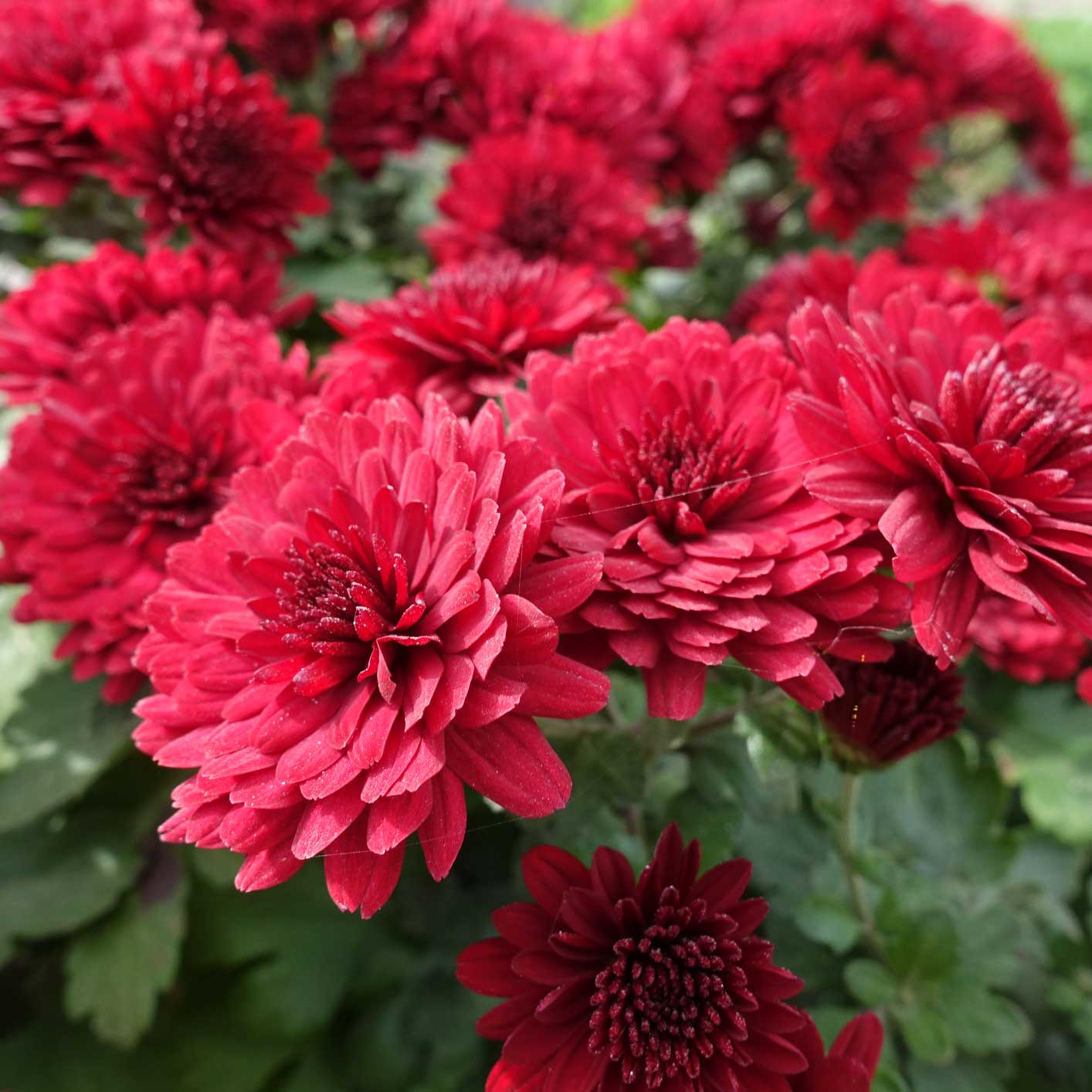
Seen frequently during the fall months, you can’t miss colorful, pom pom-like mums seen in landscaping and in planters. “They are toxic to both dogs and cats, but are only expected to cause GI upset,” Dr. Schmid says.
Dr. Kendall further explains, “Mums contain pyrethrins, which can also be found in insecticides. However, pyrethrins in the plant do not pose any risks when the plant is eaten due to their low concentrations.”
Symptoms include:
- Vomiting
- Diarrhea
- Decreased appetite
17 Pothos
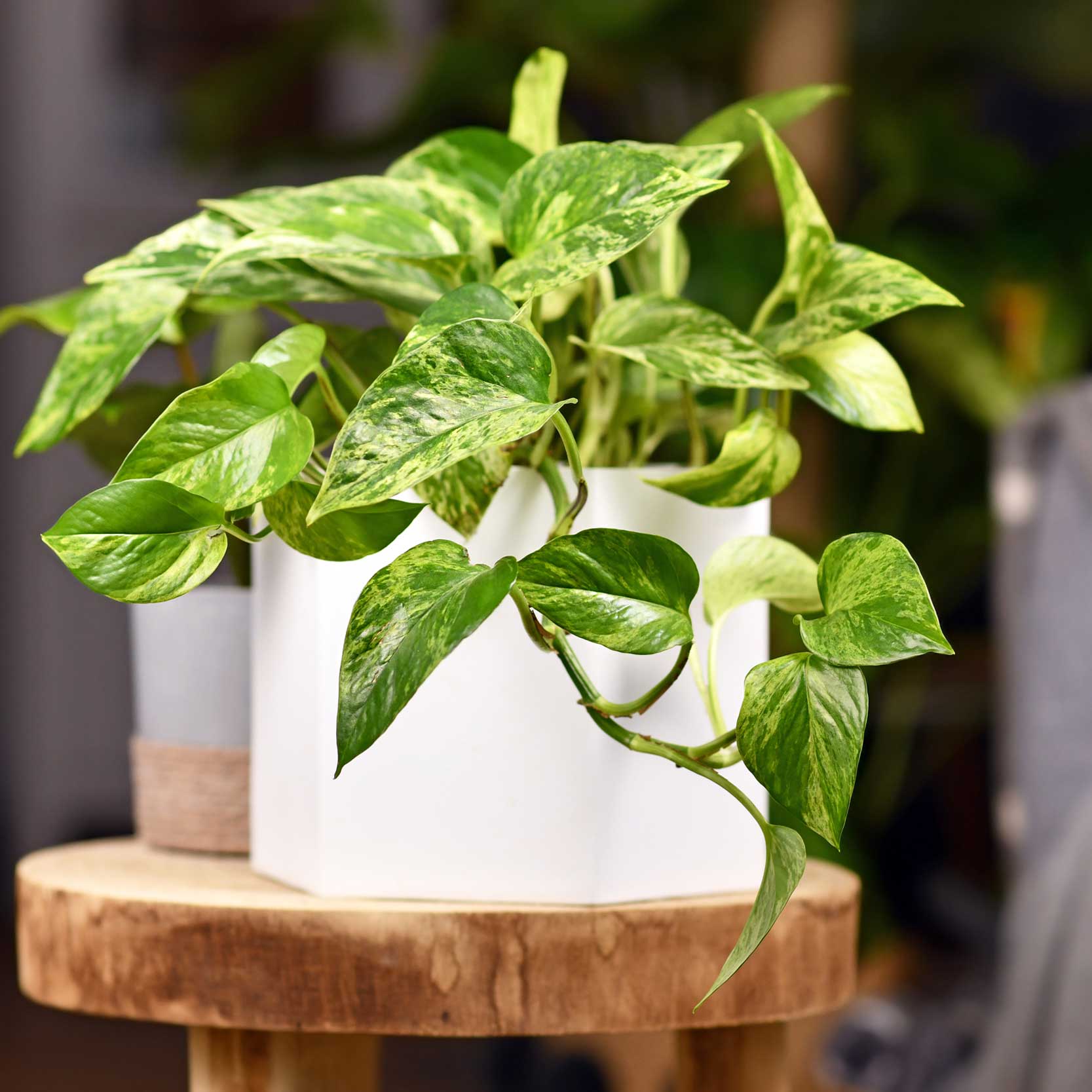
Pothos plants, also known as Devil’s Ivy, are houseplants that are frequently spotted within trendy interiors, beloved for their bright green hue and trailing vines. But, you’ll want to keep them away from your pets.
“Pothos plants contain insoluble calcium oxalate crystals and can cause symptoms in both dogs and cats,” Dr. Kendall says. “These irritating crystals are found in all parts of the plant,” and symptoms result immediately when chewed.
Symptoms include:
- Drooling
- Retching
- Vomiting
- Diarrhea
- Poor appetite
- Redness and swelling of the lips, mouth, and tongue
- While extremely rare, if severe enough, this swelling could affect the ability to breathe
18 Begonia

Found both indoors and out, the begonia is famed for its bright colors and interestingly shaped leaves. Dr. Schmid says that this plant is “toxic to both dogs and cats, but only expected to cause vomiting and diarrhea.” She adds that all parts of the plant are toxic.
Begonias can cause vomiting and diarrhea when dogs and cats ingest the stems, leaves, and flowers, Dr. Kendall says, due to insoluble calcium oxalate crystals in the plant.
Symptoms include:
- Vomiting
- Diarrhea
- Kidney damage (if the bulb is ingested)
19 Daffodil
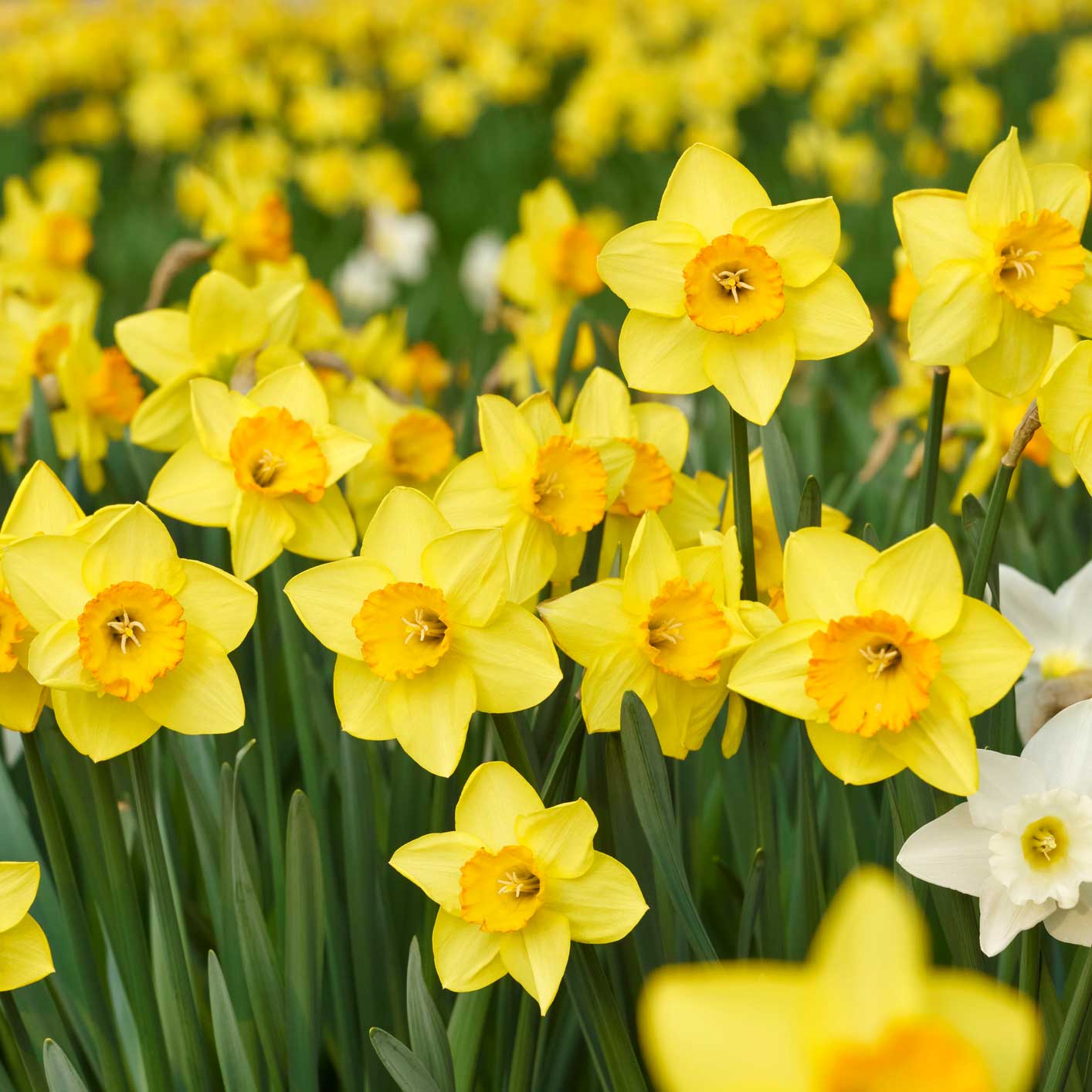
In cheerful shades of yellow and dotting springtime landscapes, you can’t help but smile when you spot a sea of daffodils. But we doubt your dog or cat would be in a good mood if they ingest these plants.
Eating the foliage of a daffodil can result in vomiting and diarrhea, Dr. Schmid says, and in rare cases, seizures can result from eating the bulbs.
Symptoms of ingestion include:
- Vomiting
- Diarrhea
- Poor appetite
- Possible seizures and changes in blood pressure from ingesting bulbs
20 Gladiola
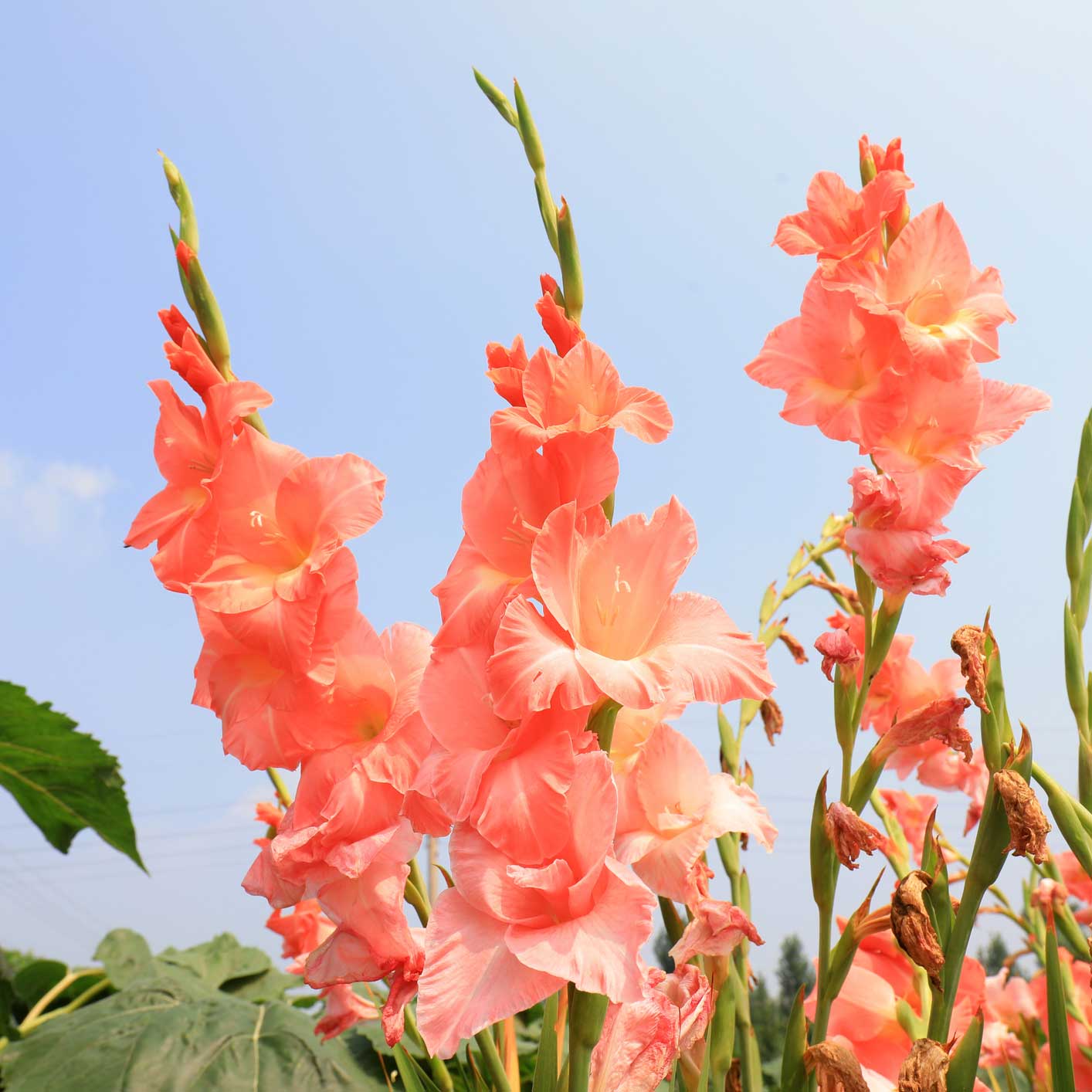
Easy to spot in a garden, gladiolas, which come in several different colors, are very tall and can bear upwards of 20 blooms on a single “spike,” as it’s called. Toxic to both dogs and cats, Dr. Schmid says that vomiting can be severe and contain blood. All parts of the plant are toxic, with the bulb being the most toxic.
Symptoms include:
- Severe vomiting that may contain blood
- Drooling
- Diarrhea
- Lethargy
- Painful abdomen
Complete List of Extremely Poisonous Plants for Dogs

Any plant can upset your dog’s stomach, but toxic ones can produce severe symptoms, like intense vomiting or organ damage, depending on the plant and how much your pup ingests.
Here are all the plants known to produce the more serious side effects (you can also find a list with photos on the ASPCA’s website):
- Adam-and-Eve (also known as Arum, lord-and-ladies, wake robin, starch root, bobbins, cuckoo plant)
- African wonder tree
- Aloe
- Amaryllis (also known as belladonna lily, Saint Joseph lily, Cape belladonna, naked lady, Barbados lily)
- Ambrosia mexicana (also known as Jerusalem oak, feather geranium)
- American mandrake (also known as mayapple, Indian apple root, umbrella leaf, wild lemon, hog apple, duck's foot, and raccoonberry)
- American mistletoe
- American yew (also known as Canada yew, Canadian yew)
- Apple (including crabapples; stem, leaves, and seeds contain cyanide, but the fruit is OK for dogs)
- Apricot (stems, leaves, and pit contain cyanide)
- Arrowhead vine (also known as Nephthytis, green gold naphthysis, African evergreen, trileaf wonder)
- Australian ivy palm (also known as Schefflera, umbrella tree, octopus tree, starleaf)
- Autumn crocus (also known as naked ladies)
- Azalea
- Baby doll ti plant (also known as ti-plant, good-luck plant, Hawaiian ti plant)
- Barbados pride (also known as peacock flower, dwarf poinciana)
- Barbados pride 2 (also known as bird of paradise, Poinciana, brazilwood)
- Begonia
- Bergamot orange
- Bird of paradise flower (also known as crane flower, bird's tongue flower)
- Bishop’s weed (also known as false Queen Anne’s lace, greater ammi)
- Bitterroot (also known as dogbane hemp, Indian hemp)
- Bittersweet (also known as American bittersweet, waxwork, shrubby bittersweet, false bittersweet, climbing bittersweet)
- Black calla (also known as Solomon’s lily, wild calla, wild arum)
- Black laurel (also known as dog hobble, dog laurel, fetter bush, sierra laurel)
- Black walnut
- Bog laurel (also known as pale laurel)
- Borage (also known as starflower)
- Boxwood
- Branching ivy (also known as English ivy, sweetheart ivy, California ivy)
- Brunfelsia (also known as lady-of-the-night, kiss-me-quick, Franciscan rain tree)
- Buckwheat
- Burning bush (also known as spindle tree)
- Buttercup (also known as figwort)
- Butterfly iris
- Calamondin orange
- Calla lily (also known as trumpet lily, arum lily, pig lily, white arum, florist's calla, garden calla)
- Caraway
- Cardboard palm (also known as cardboard cycad)
- Carnation
- Castor bean plant
- Chamomile
- Chandelier plant (also known as devil’s backbone)
- Cherry (stem, leaves, and pit)
- Chinaberry tree (also known as bead tree, China ball tree, paradise tree, Persian lilac, white cedar, Japanese bead tree, Texas umbrella tree, pride-of-India)
- Chinese evergreen
- Chinese jade (also known as silver jade plant, silver dollar)
- Chives
- Chrysanthemum (also known as mums)
- Clematis (also known as virgin’s bower)
- Clivia lily
- Coffee tree
- Coleus (also known as bread-and-butter plant, Spanish thyme, East Indian thyme)
- Corn plant (also known as dragon tree)
- Cow parsnip (also known as giant hogweed)
- Cowbane
- Cyclamen
- Daffodil (especially the bulbs)
- Dahlia
- Daisy
- Desert rose (also known as desert azalea, mock azalea)
- Deadly nightshade (also known as climbing nightshade, poisonous nightshade, woody nightshade, and blue nightshade)
- Dieffenbachia (also known as dumb cane)
- Dog daisy
- Eastern star
- Elephant ears (also known as taro, malanga, and Caladium)
- Elephant-ear begonia
- Emerald fern (also known as emerald feather, asparagus fern)
- Epazote (also known as Mexican tea)
- Eucalyptus
- Fetterbush (also known as maleberry, staggerberry)
- Fleabane (also known as horseweed, showy daisy)
- Florida beauty (also known as gold dust dracaena, spotted dracaena)
- Foxglove
- Gardenia (also known as Cape jasmine)
- Garlic
- Geranium
- Giant dracaena (also known as palm lily, grass palm)
- Gladiola
- Glory lily (also known as gloriosa lily, climbing lily, superb lily)
- Good luck plant (also known as golden bird’s nest, snake plant)
- Grapefruit (skin and plant parts; fruit isn’t toxic)
- Heavenly bamboo (also known as sacred bamboo)
- Hellebore (also known as Christmas rose, Easter rose)
- Holly (also known as American holly, English holly, European holly, Oregon holly, inkberry, winterberry)
- Hops
- Horse chestnut (also known as buckeye)
- Hosta
- Hyacinth
- Hydrangea
- Indian rubber plant (also known as fig, weeping fig)
- Iris (also known as flag, snake lily, water flag)
- Iron cross begonia
- Jack-in-the-pulpit
- Jade plant (also known as baby jade, dwarf rubber plant, Chinese rubber plant, Japanese rubber plant)
- Japanese yew (also known as Buddhist pine or Southern yew)
- Jerusalem cherry (also known as winter cherry)
- Jonquil
- Lambkill (also known as sheep laurel)
- Larkspur
- Laurel (also known as mountain laurel, bay laurel)
- Lavender
- Leek
- Lemon (skin and plant parts; fruit is non-toxic)
- Lemon grass
- Lemon verbena
- Lily of the valley
- Lily-of-the-valley bush (also known as andromeda japonica)
- Lime (skin and plant parts; fruit is edible)
- Lobelia (also known as cardinal flower, Indian pink)
- Locust
- Lovage
- Macademia nut
- Madagascar dragon tree
- Mapleleaf begonia
- Marijuana (also known as Indian hemp, hashish)
- Marjoram
- Mayweed
- Metallic leaf begonia
- Milkweed
- Mint
- Mole bean plant
- Morning glory
- Narcissus (also known as paper white)
- Nightshade (also known as black nightshade)
- Oleander
- Onions
- Orange (skin and plant parts; fruit isn’t toxic)
- Oregano
- Painter’s palette (also known as flamingo lily, flamingo flower, pigtail plant, and oilcloth flower)
- Parsley
- Peace begonia
- Peace Lily
- Peach (stem, leaves, and pit)
- Pencil cactus (also known as sticks of fire)
- Peony
- Periwinkle (also known as running Myrtle)
- Philodendron
- Plum (stem, leaves, and pit)
- Poinsettia
- Poison hemlock (also known as deadly hemlock, winter fern, California fern, Nebraska fern)
- Pothos (also known as golden pothos, taro vine, devil’s ivy)
- Prayer bean (also known as rosary bean, Buddhist rosary bean, Indian bean, Indian licorice)
- Prickly ash (also known as Angelica tree, prickly elder, Hercules’ club, devil’s walking stick)
- Primrose
- Privet (also known as wax-leaf)
- Purslane (also known as moss rose, rock moss)
- Ragwort (also known as golden ragwort)
- Ranger’s button (also known as swamp white heads)
- Red-marginated dracaena
- Red sage (also known as shrub verbena, Lantana, yellow sage)
- Rex begonia
- Rhubarb
- Sago palm
- Shamrock plant
- Skunk weed (also known as skunk cabbage, swamp cabbage, polecat weed)
- Sorrel
- Spring parsley
- St. John’s wort (also known as Klamath weed)
- Striped dracaena
- Sweet pea (also known as everlasting pea)
- Sweet William (also known as pinks)
- Tahitian bridal veil
- Tarragon
- Tobacco (also known as tree tobacco, mustard tree, Nicotiania)
- Tomato plant
- Tulips
- Wandering Jew
- Watercress
- Wisteria
- Yarrow (also known as milfoil)
- Yucca
What To Do If Your Dog Eats Toxic Plants
While some plants can just give your pup diarrhea, there are others that are extremely poisonous and can cause serious problems, like liver damage. On top of that, many of the more dangerous poisonous plants for dogs are also very common plants to have in your home, like sago palm plants.
If you think your pet has eaten a poisonous plant, head to the animal ER instead of trying to treat your pet at home.
If you aren’t sure what your pet ate, call the ASPCA’s Animal Poison Control Hotline at 888-426-4435 or the Pet Poison Helpline (855-764-7661). They’re available 24 hours a day, 365 days a year. They can tell you how toxic the plant is and if you need to seek veterinary care.
Pet-Proofing Your Home
The best thing to do as far as prevention goes is to not have these plants at all. But sometimes, that’s just not possible—say, you bought a house with a yard full of azaleas. In that case, you can put a barrier up or use a plant stand to prevent your pooch from getting to these plants.
When adding greenery to your home, be sure to get plants that are pet-safe, like spider plants, violets, or orchids, suggests Dr. Hohenhaus.
FAQs About Poisonous Plants for Dogs
Q:Are snake plants poisonous to dogs?
A:“Yes, they are toxic, but usually only cause vomiting and diarrhea,” Dr. Schmid says. “With larger ingestions, there may be drooling, difficulty walking, and decreased appetite in dogs.”
Q:Are lilacs poisonous to dogs?
A:Dr. Kendall says that lilacs are not poisonous. But she goes on to say, “However, any time plant material is eaten, an upset stomach can occur, so pets may still experience a change in appetite, vomiting, or diarrhea.”
Q:Are orchids poisonous to dogs?
A:“Orchids are considered non-toxic, but may cause mild stomach upset,” Dr. Schmid says.
Q:Are spider plants poisonous to dogs?
A:Spider plants are considered to be non-toxic, according to Dr. Schmid, with just mild stomach upset possible.
Q:Are roses poisonous to dogs?
A:“Roses are not considered toxic, but may cause stomach upset, and the thorns can cause trauma to the mouth and esophagus if ingested,” Dr. Schmid cautions.
Linda Rodgers contributed to this story.
This content was medically reviewed by Kelly Gold, DVM, Chewy veterinarian.
More About Pet Safety:
Share:
